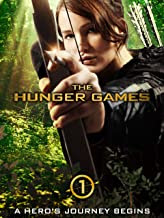Has there ever been a person, when they
first came to any ocean, who did not take a moment to just stand and see?
Whether on a calm day as the wide expanse curves on the horizon with waves
rolling in long hypnotic sweeps, or whether it’s a day of storms and mighty
crests crashing against rocks, one can’t but stop and gape at the power of
something beyond ourselves. When Henry David Thoreau set out to go to Cape Cod
to look at the sea and ponder and write about its majesty, he found that the
day before he arrived, a ship full of emigrants from Ireland had been beaten
violently on the harsh rocky shores and more than a hundred people had lost
their lives. Irish mourners flocked to the scene, traveling the same path with
Thoreau, yet it was the local villagers and how they went about the business of
recovering the corpses that seemed to fascinate Thoreau. In “The Shipwreck”,
Thoreau explains how people who live near the waters of Cape Cod have become
pragmatic in the aftermath of the sea’s brutality, and how Thoreau’s view of
the sea has this same detachment of the harshness in common with “The Rime of
the Ancient Mariner” by Samuel Taylor Coleridge.
As Thoreau walked down to the beach, he
saw the local farmers and tradesmen bringing wagons down, loaded with
rough-hewn boxes to be used as coffins. There had only been twenty-eight bodies
founds of the one hundred and forty-five perished. The locals were busily
engaged in finding the rest beneath the largest part of the wreckage which lay
onshore. Yet Thoreau “witnessed no signs of grief, but there was a sober
dispatch of business which was affecting” (1) as the men went about nailing
down lids or trying to identify certain bodies sought by the Irish who had come
to find them. Others were collecting sea-weed for fertilizer, taking it higher
up on shore so it would not be lost in the tide “though they were often obliged
to separate fragments of clothing from it, and they might at any moment have
found a human body under it (Thoreau 1). Even though there was a tragic event
just beyond their homes, the people living by the sea understood the importance
of gathering what one could from the ocean. The locals had acquired a great
deal of resilience to cope with the horrors that living by the ocean and near
one of the deadliest shores demanded of them. They became people who were able
to detach themselves from what the harsh sea spat out in order to do what had
to be done for those who couldn’t do it for themselves. Yet, Thoreau
conjectures, for all their pragmatism and seemingly being unaffected, once the
funeral procession had passed on and the mass graves covered, it was the local
villagers who “would watch there many days and nights for the sea to give up
its dead, and their imaginations and sympathies would supply the place of
mourners far away, who as yet knew not of the wreck” (1). Thoreau muses that
the inhabitants should have a crest on their family shields of a wave and the
datura plant, “which is said to produce mental alienation of long duration” (1)
which is the only way they could deal with what the sea brings them. With the dreadfulness
of the multitude of corpses around him on the beaches, Thoreau seems to cope by
wondering about man’s relationship to the sea, as well as how that may fit into
the afterlife, much like the wonderings of the Mariner about the sea in Samuel
Taylor Coleridge’s “The Rime of the Ancient Mariner”.
Thoreau, too, appears to take on the
detachment shown by the locals at seeing so many dead at one time. He notes
that when “corpses might be multiplied, as on the field of battle, till they no
longer affected us in any degree, as exceptions to the common lot of humanity”
(Thoreau 1). He goes on to think about how while these poor bodies are ravaged
in the ocean, that perhaps they really have sailed into a safe port in Heaven
(Thoreau 1) and it doesn’t matter that their corpses are “dashed on the rocks
by the enraged Atlantic Ocean” (Thoreau 1). Thoreau ends “The Shipwreck” by
writing of another trip to the same beach much later on a calm day. The breezes
from the water brought an enjoyable coolness and the water was crystal clear.
He looked down and “could see the sea-perch swimming about” (Thoreau 1). The
harshness of the sea had been replaced by a calm and beautiful ocean. This same
scenario occurred in “The Rime of the Ancient Mariner”. The sea turned on the
sailors just as it had turned on the emigrants coming from Ireland. Instead of
tossing them and cracking the ship against the rocks, Coleridge’s mariners were
caught in a lull in the middle of the ocean, just as dangerous when food and
water run out and there is no breeze to sail by. Just as Thoreau did,
Coleridge, through his mariner, ponders the afterlife and whether the dead
sailors’ souls flew “to bliss or woe!” (Coleridge 1), and whether the pilot who
comes to greet him will give him a blessing to wash away his sin of shooting
the albatross. Another similarity in the two works is found with how as
terrible as the sea can be, both Thoreau and Coleridge saw the beauty the sea
can also give in the same way as the mariner looks down into the calm water and
glimpses the water-snakes “move in tracks of shining white” (Coleridge 1). The
sea can be both terrible and beneficial and those sailing upon it or making a
living close to the coast have learned to live in harmony with the nature of
the ocean in good or horrible times.
Thoreau
was able to witness just one moment of tragedy in one particular day in the
lives of the people of Cohasset. He glimpsed their resiliency and how they have
learned to live and work near the sea, as well as the pragmatism that has
evolved in their character. Thoreau writes about this unyielding practicality
of the local inhabitants and how they went to work after a terrible shipwreck,
and how all of mankind has the ability to cope with the brutality of the sea,
by also seeing the ocean’s beauty as found in Thoreau’s “The Shipwreck” and
Coleridge’s “The Rime of the Ancient Mariner”. When next one stands on a
seashore, take a deep breath and see.
Works
Cited
Coleridge,
Samuel Taylor. “The Rime of the Ancient Mariner.” Bartleby.com www.bartleby.com/41/415.html
Thoreau,
Henry D. “The Shipwreck.” Cape Cod, 2010. The Project Gutenberg www.gutenberg.org/files/34392/34392-h/34392-h.htm
Image:
"Ardgour Shipwreck - Scotland" by Dave Holder is licensed under CC BY-NC-SA 2.0





